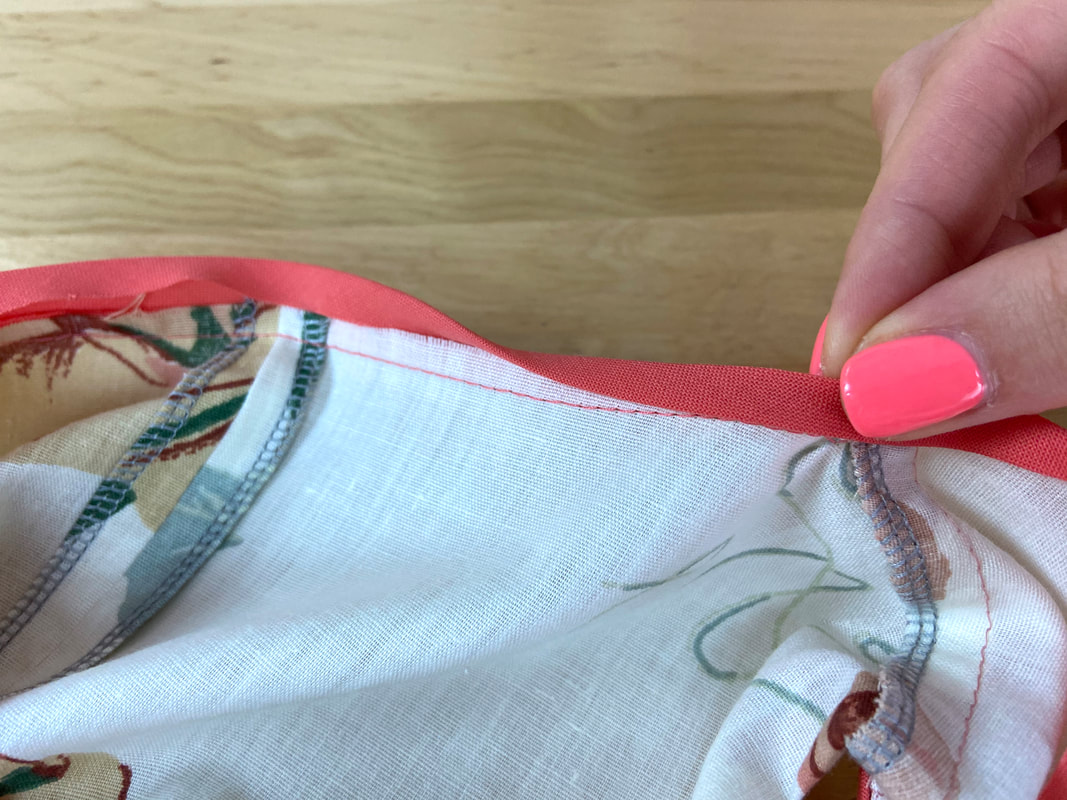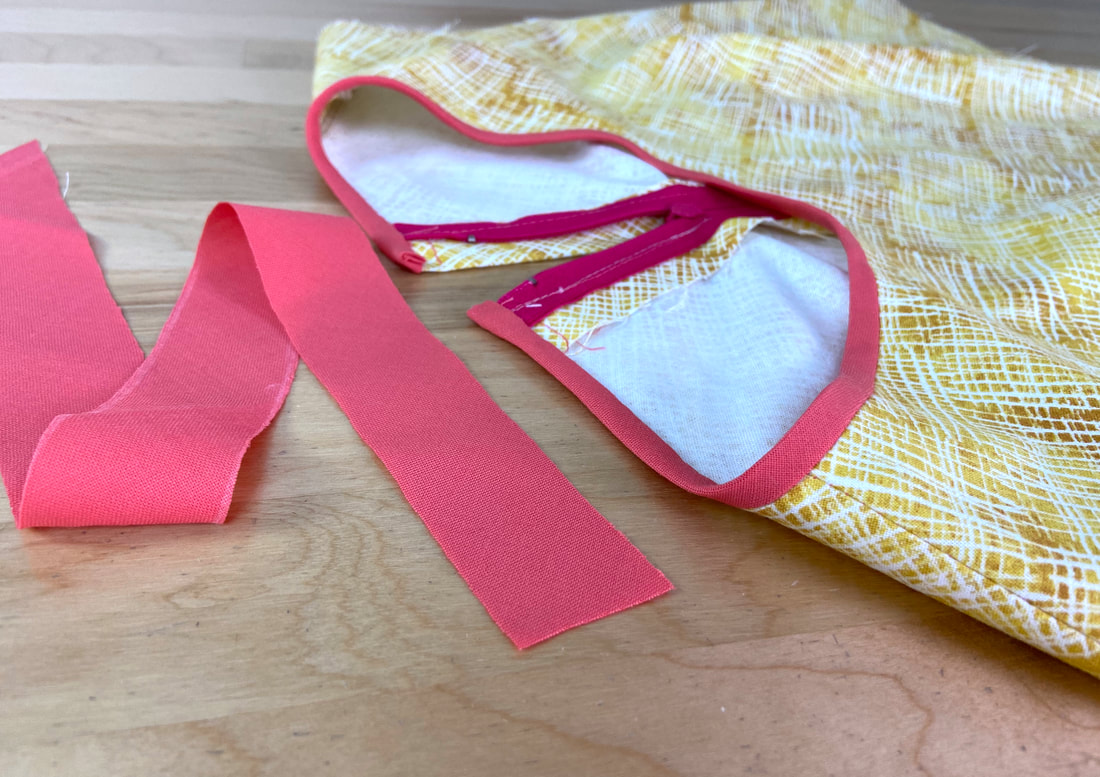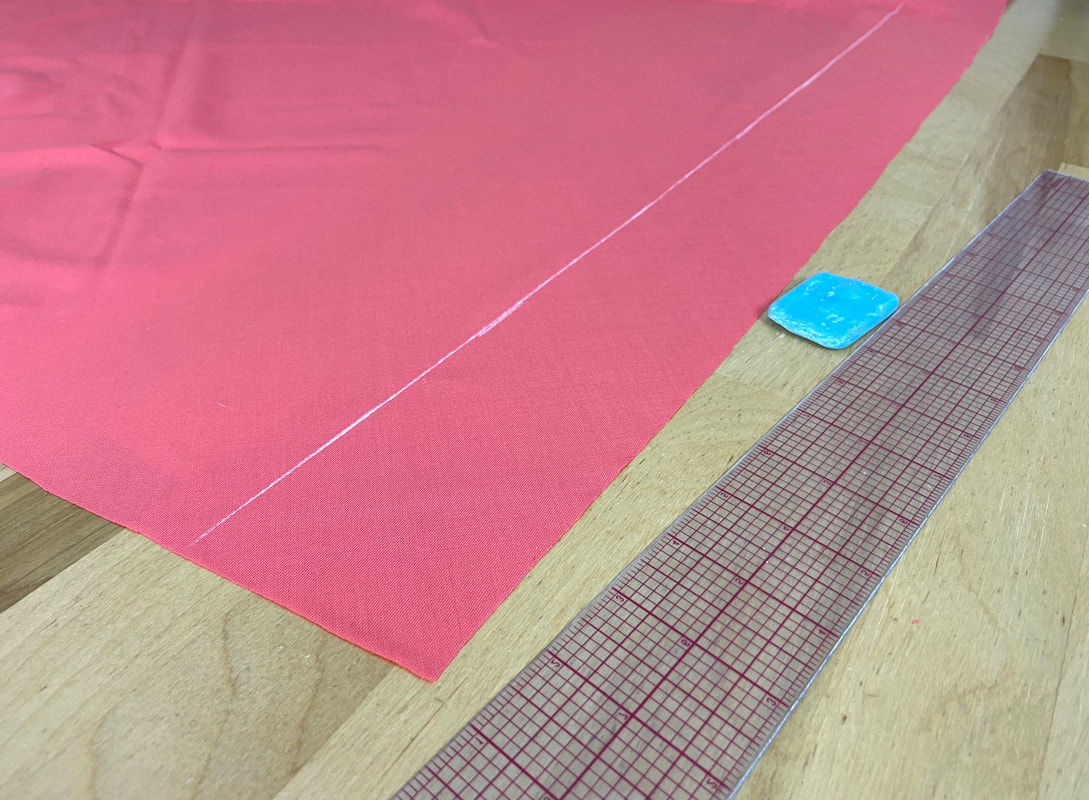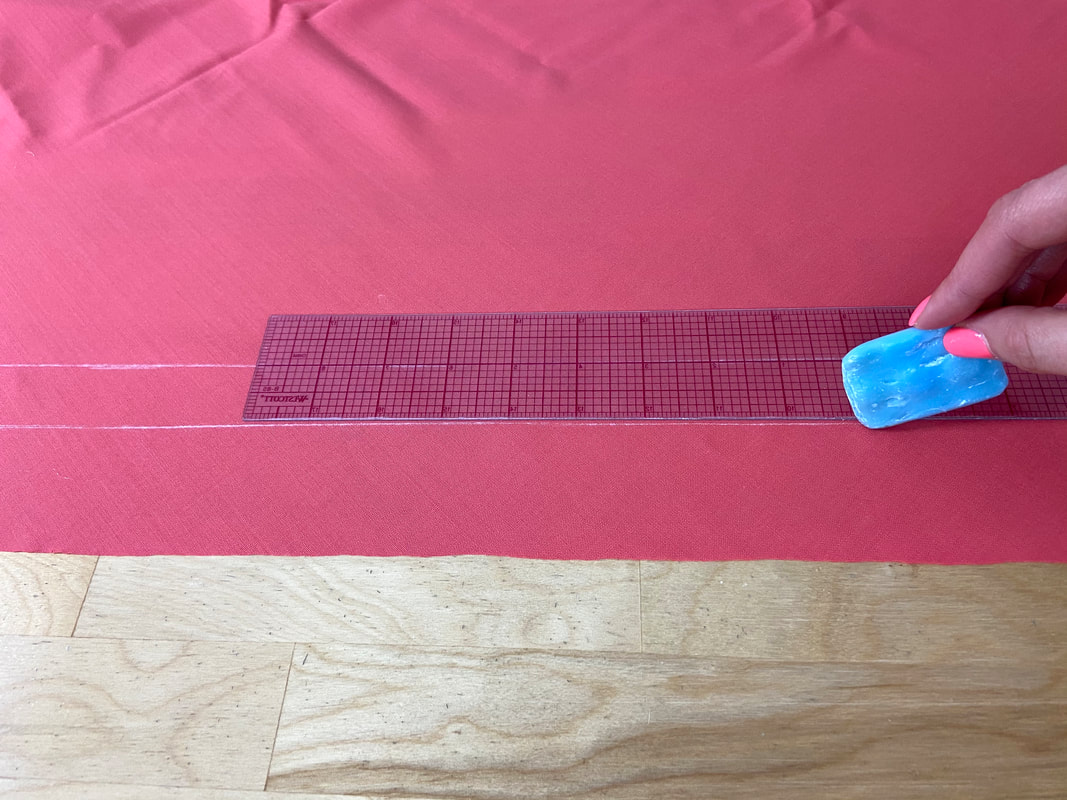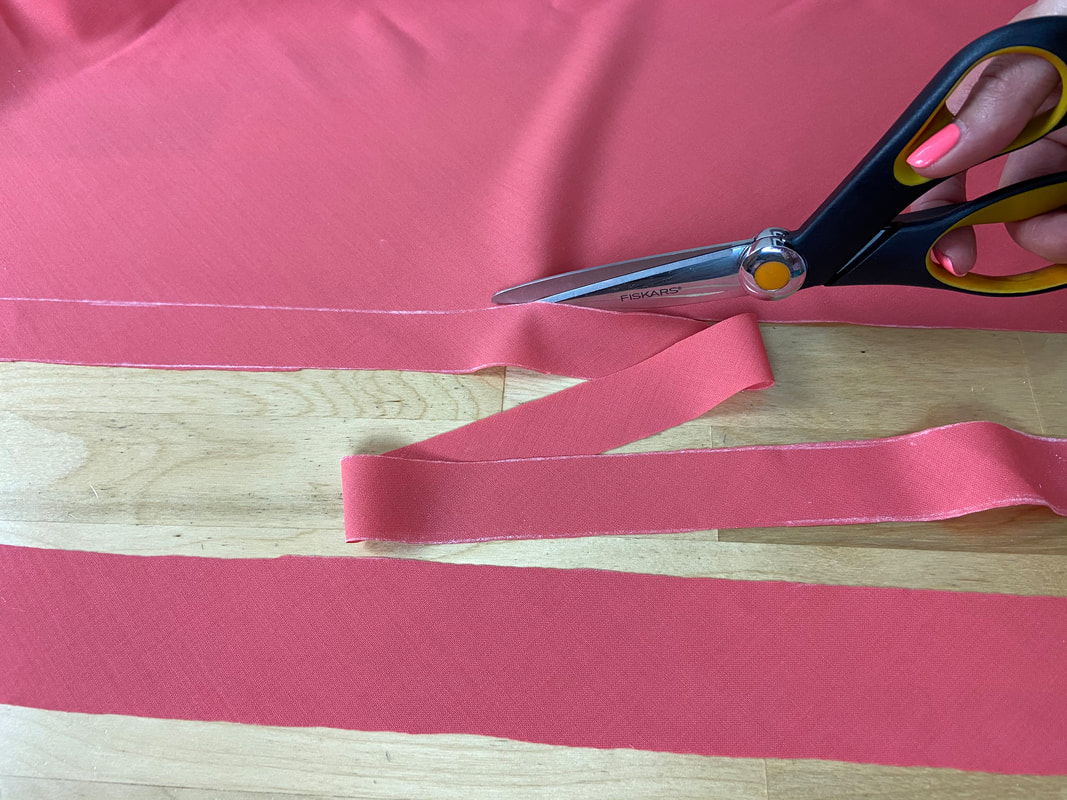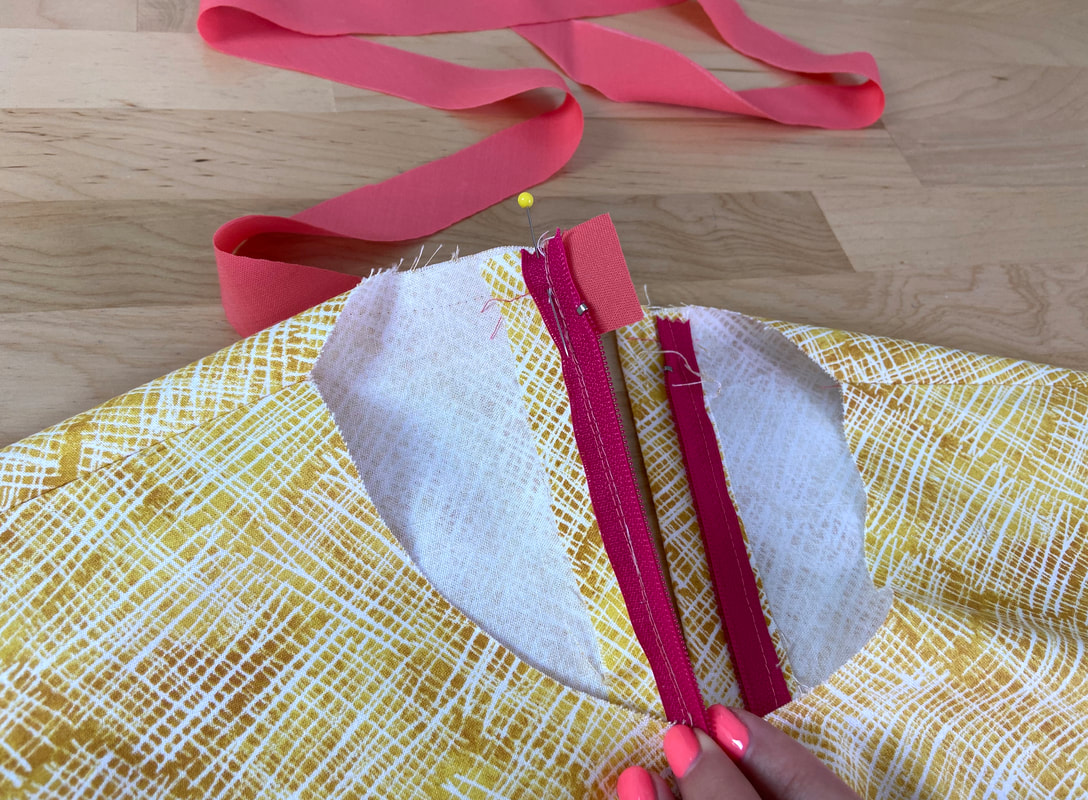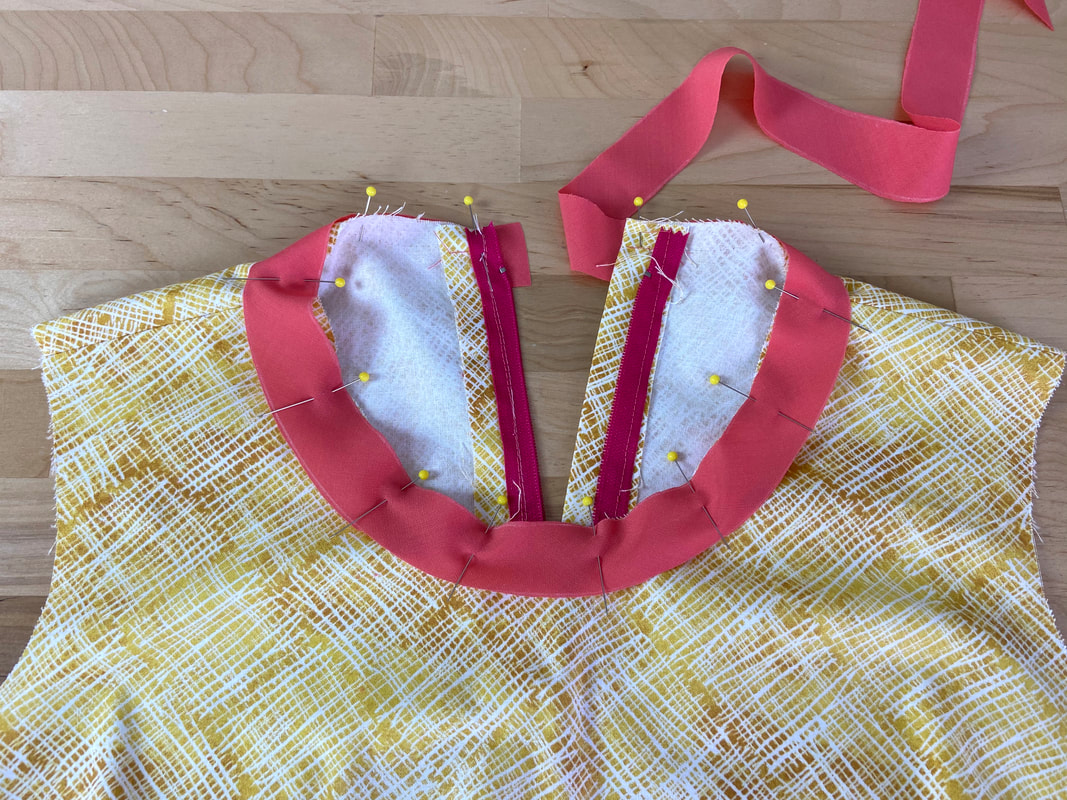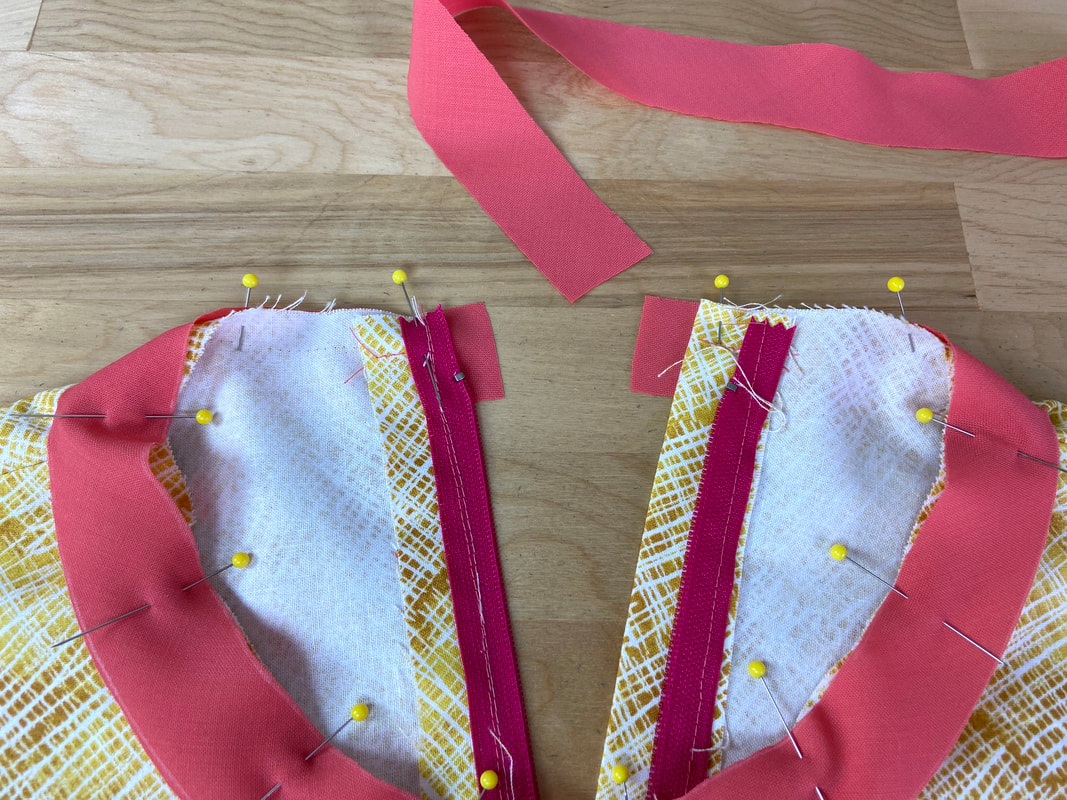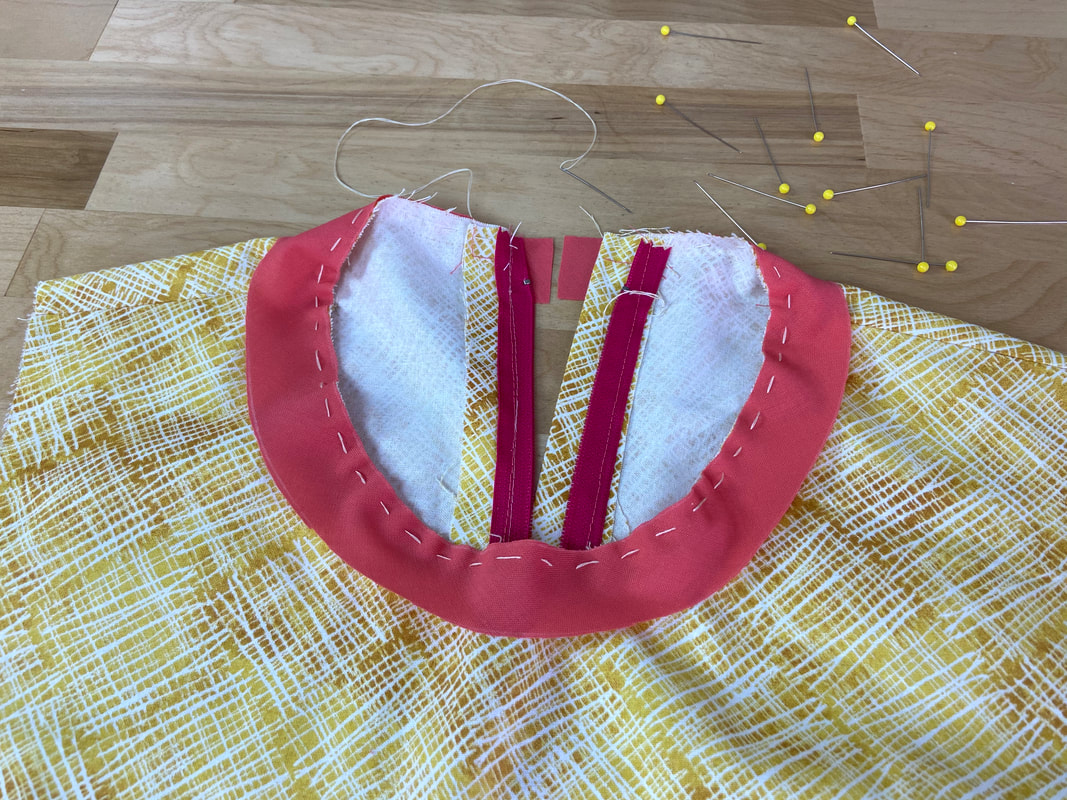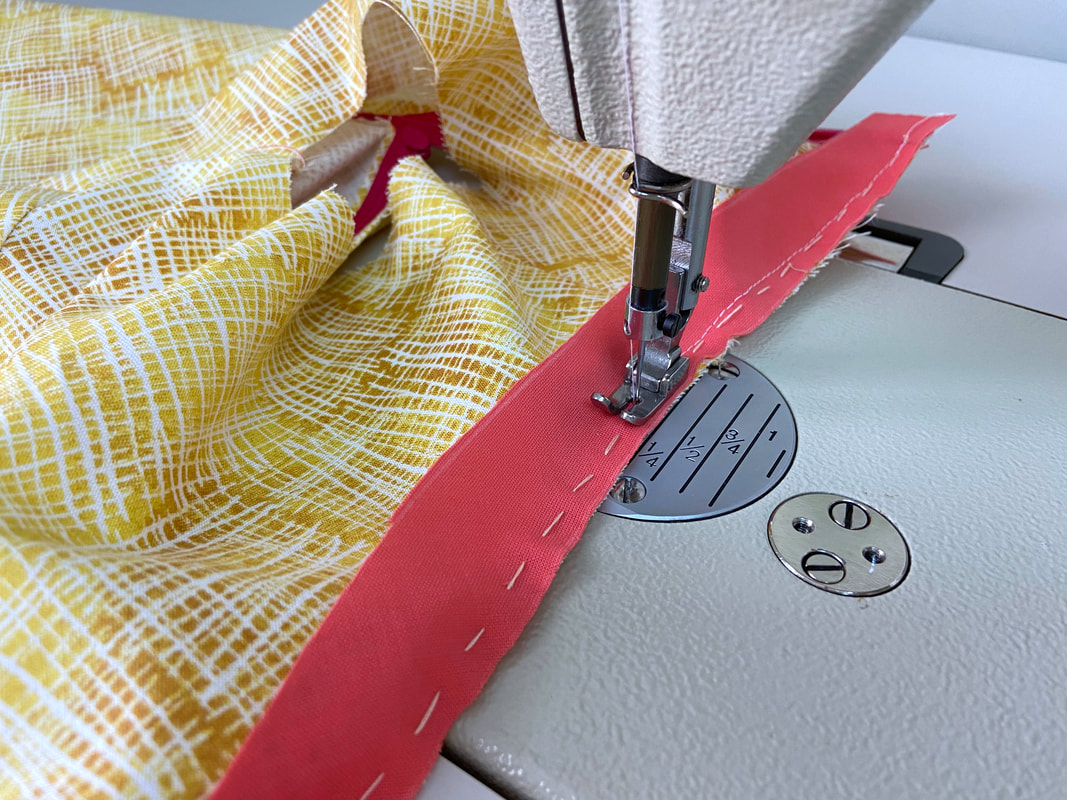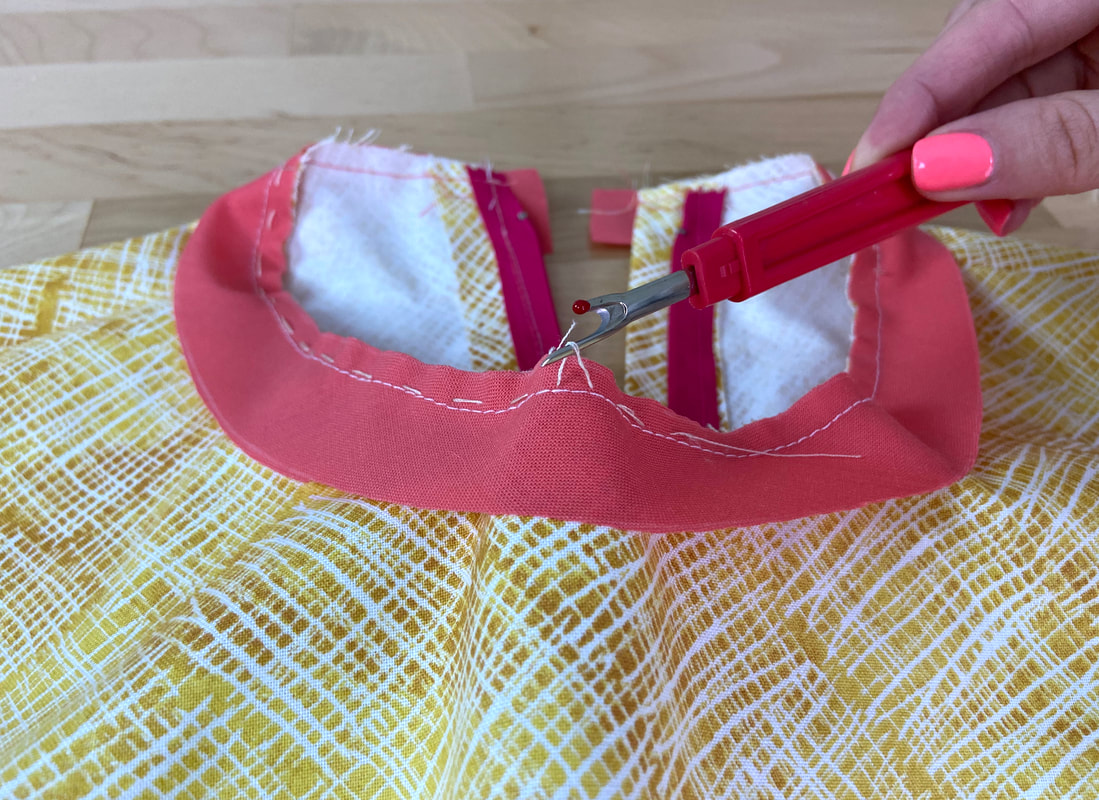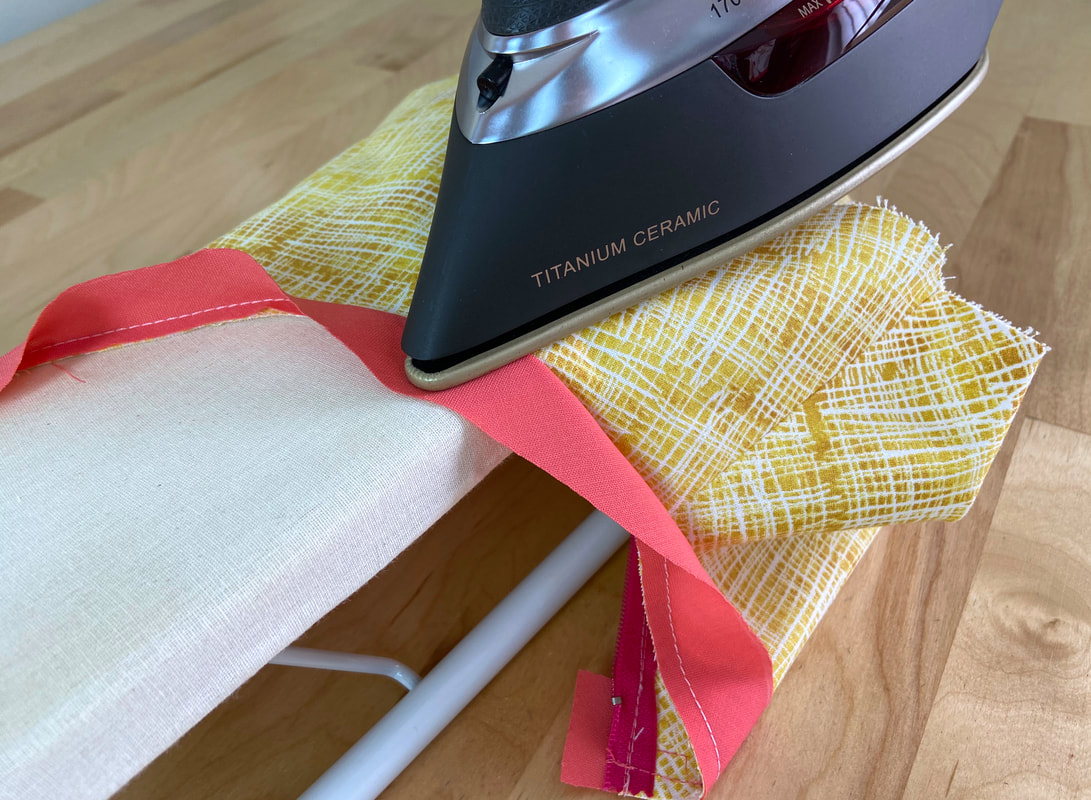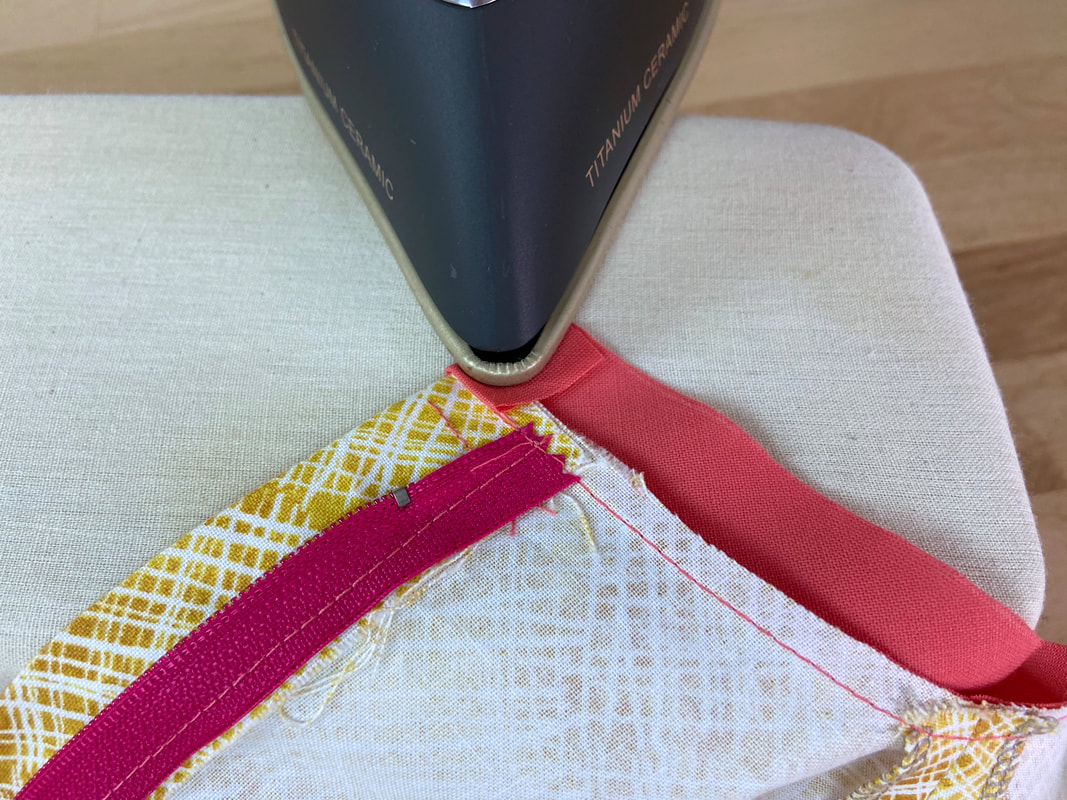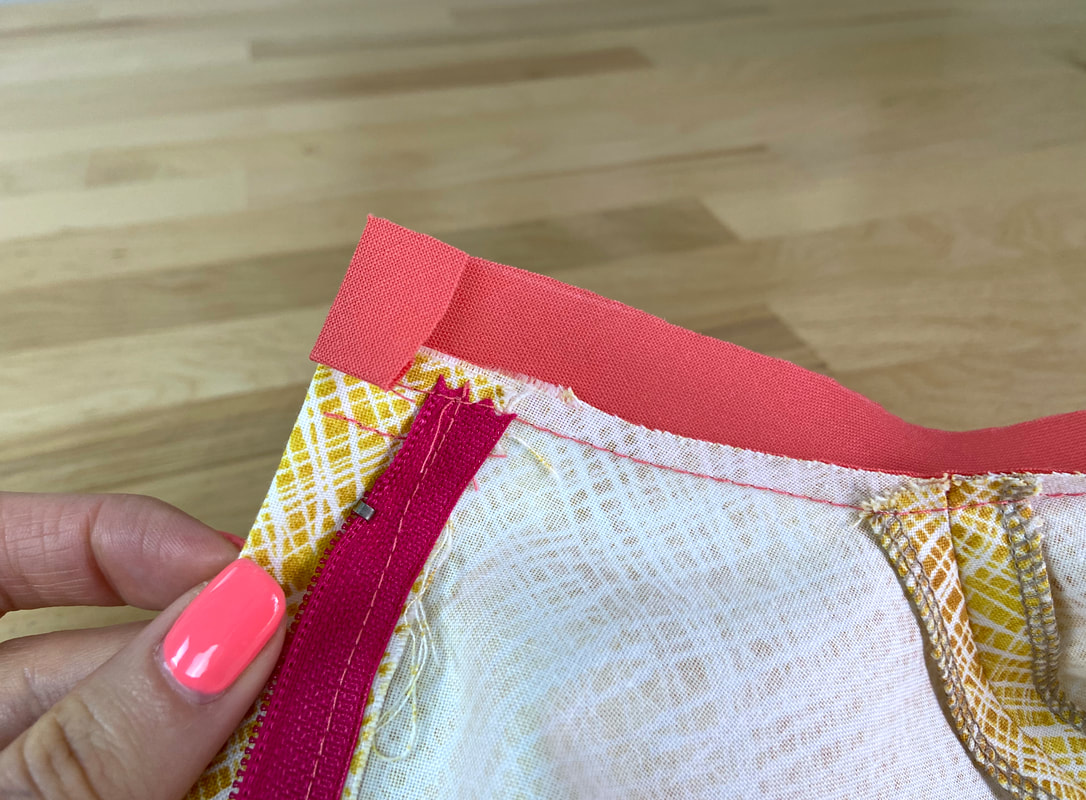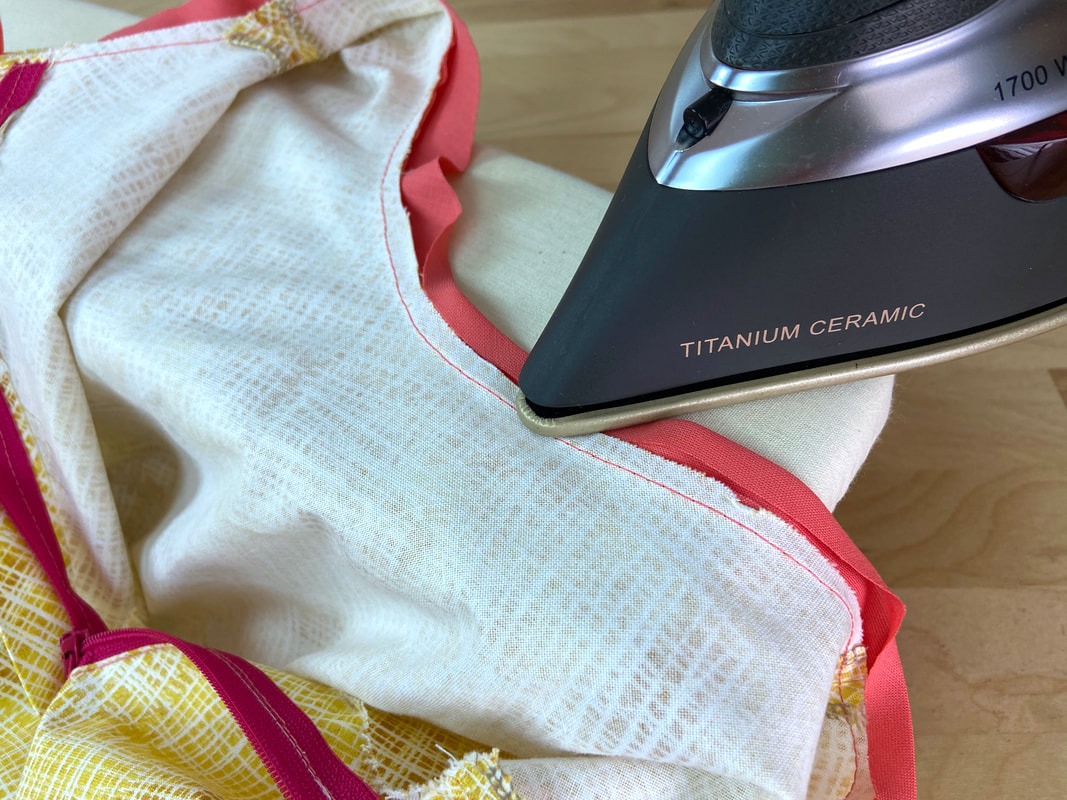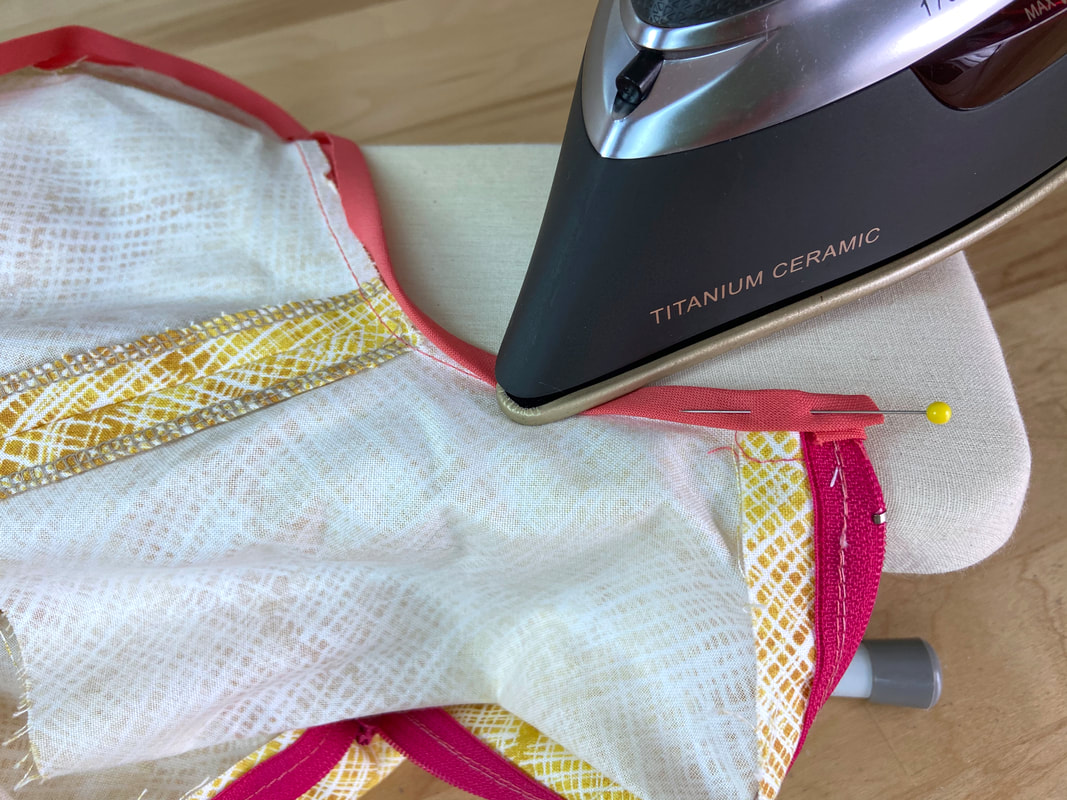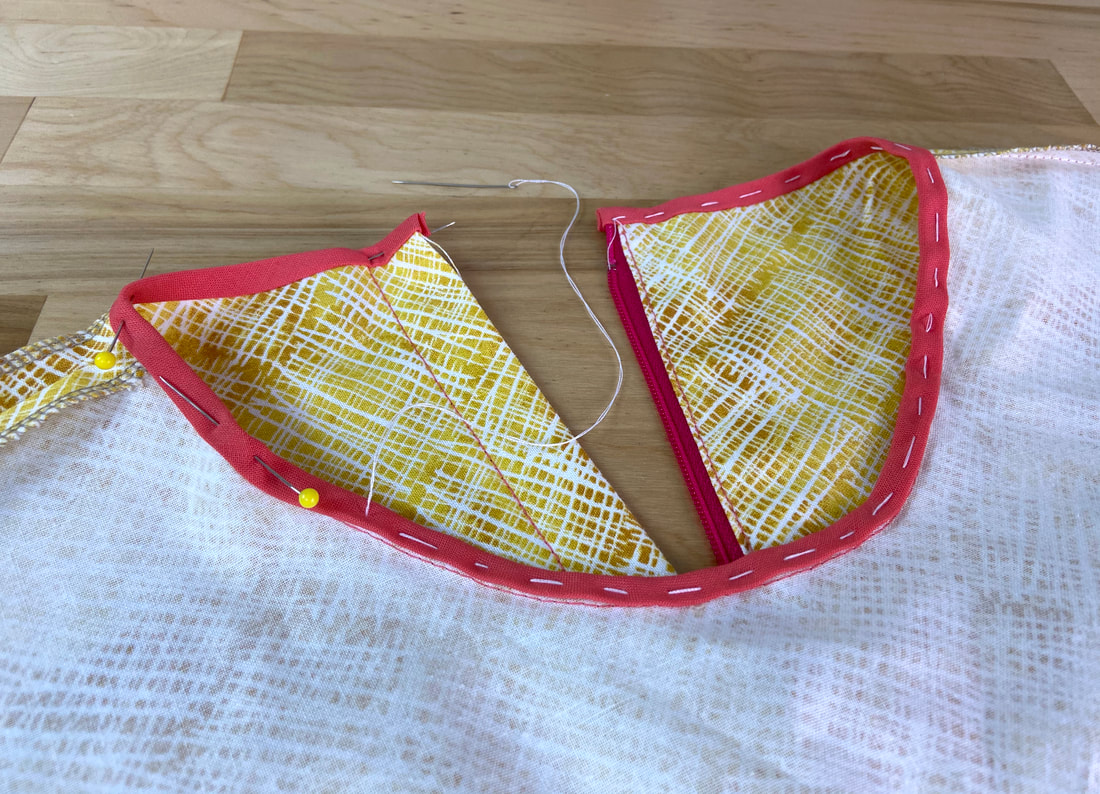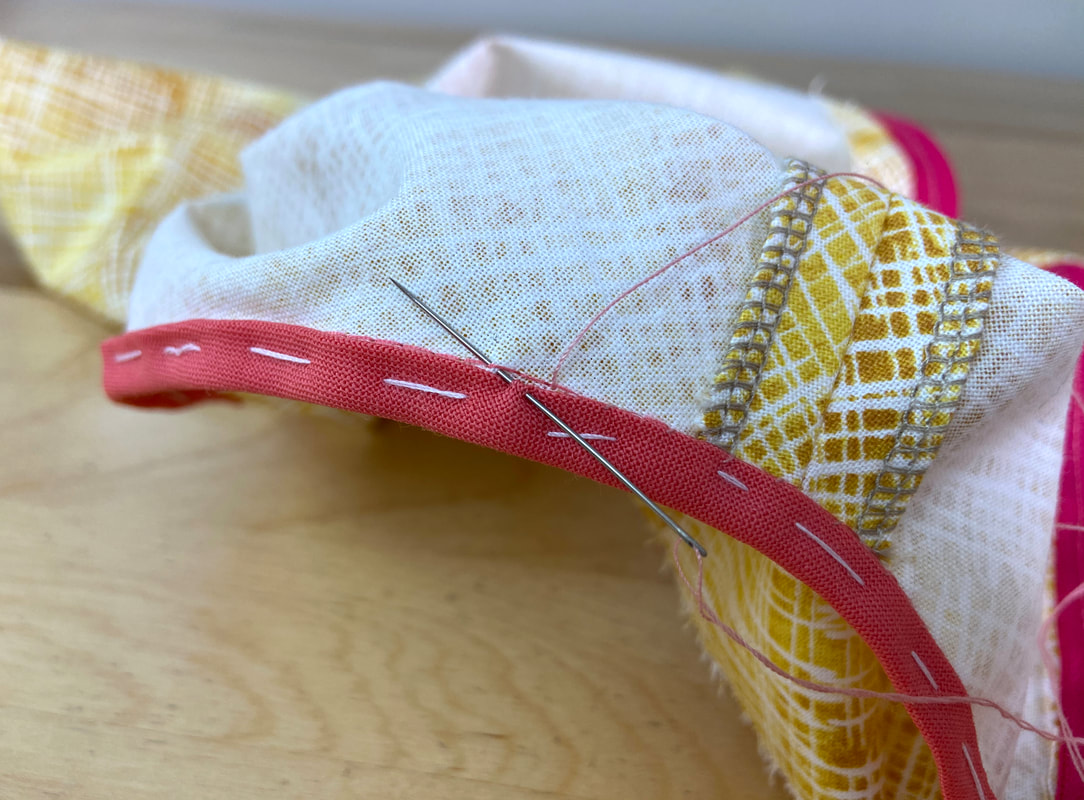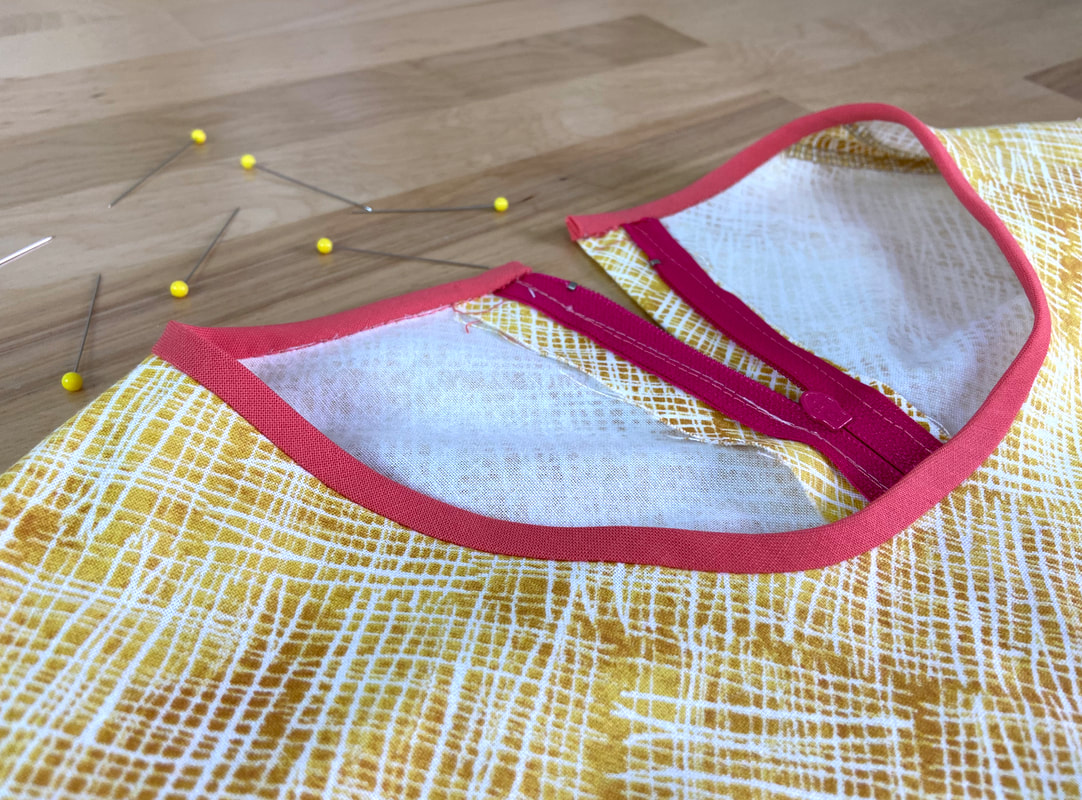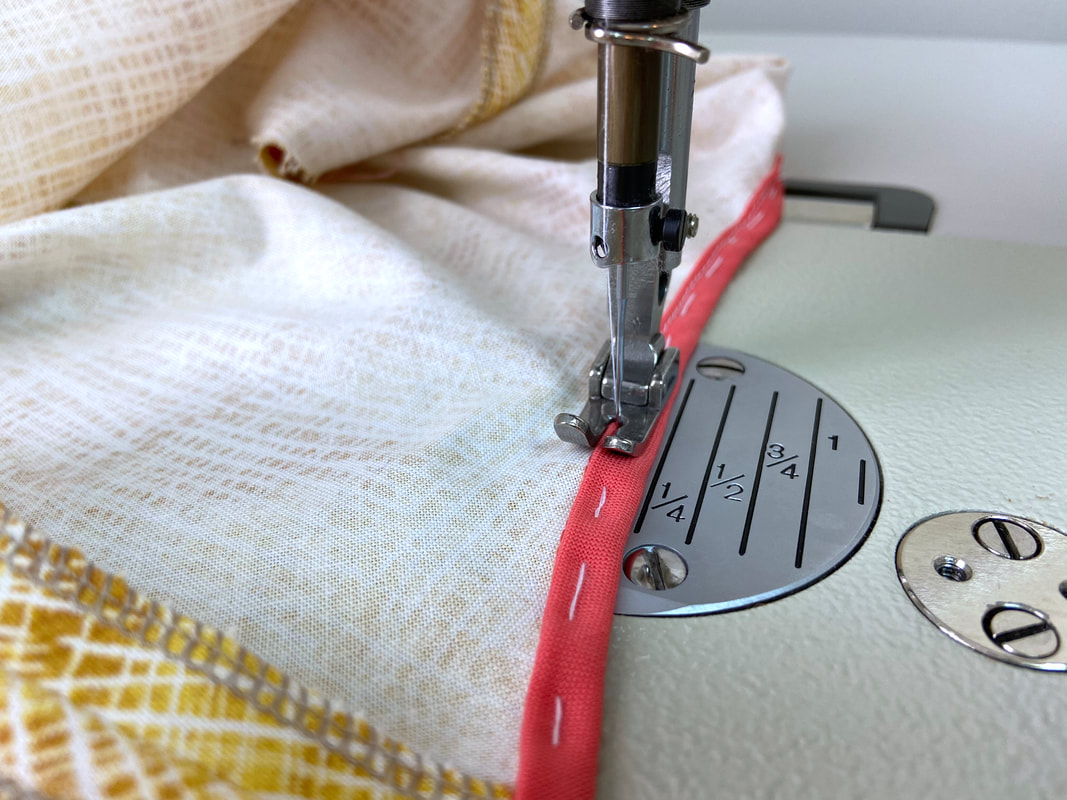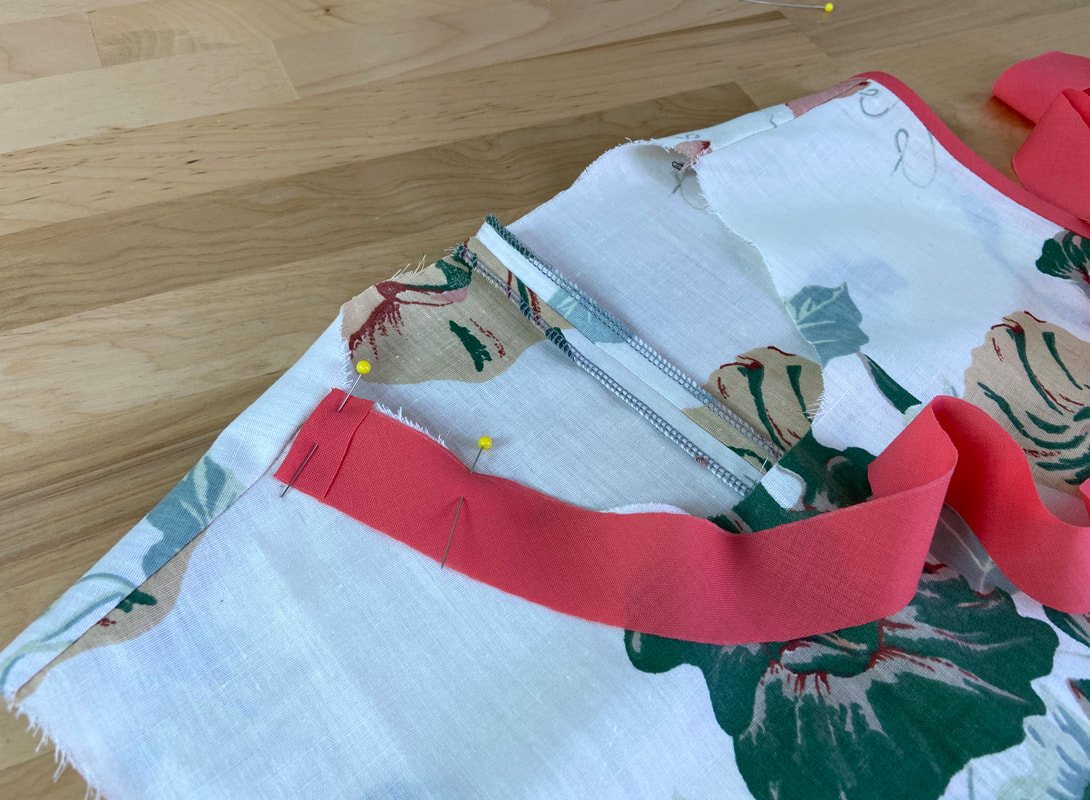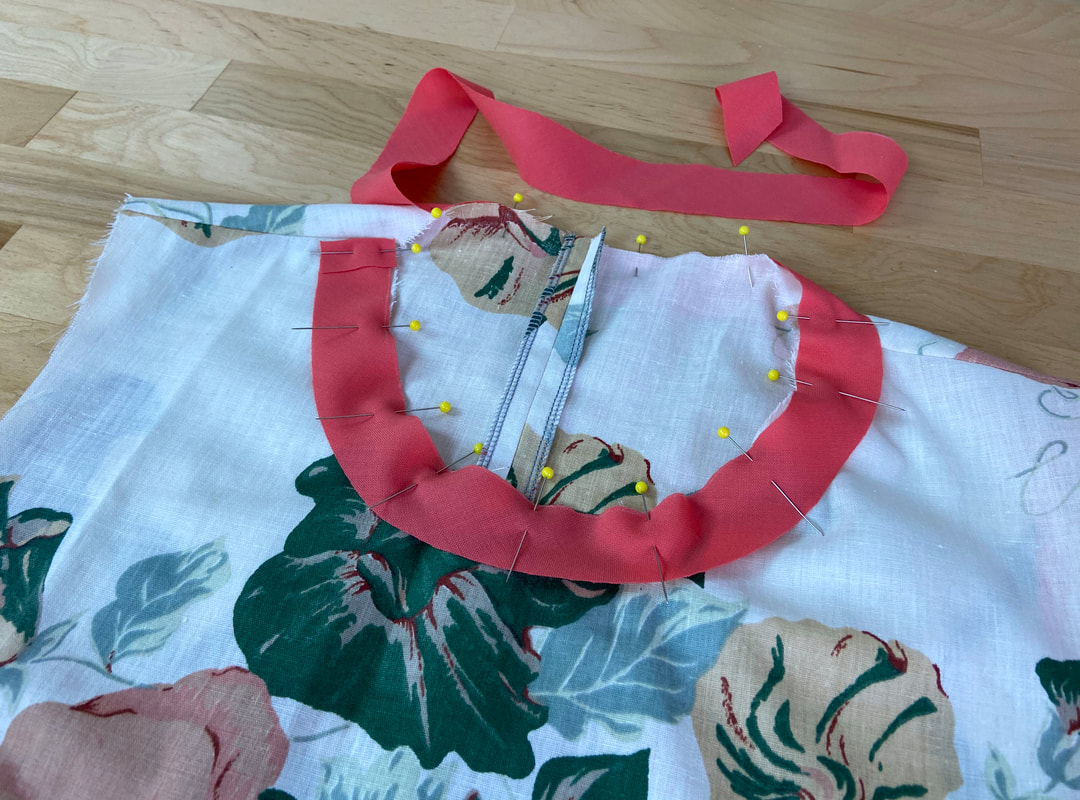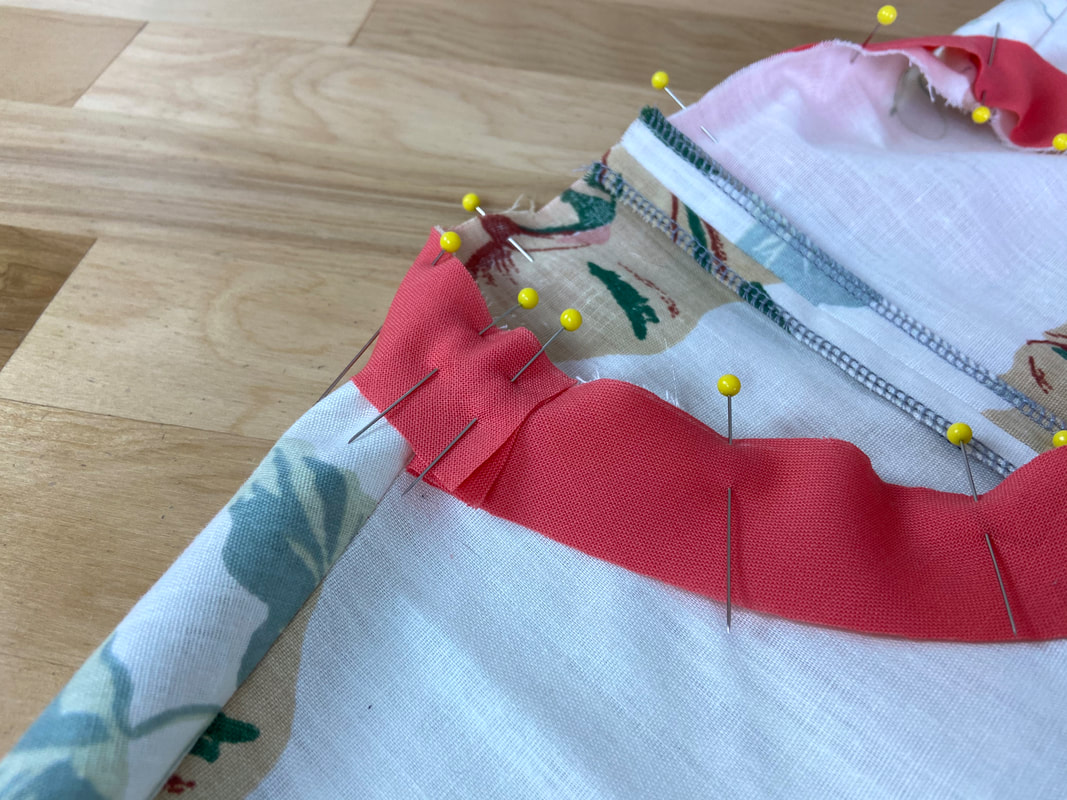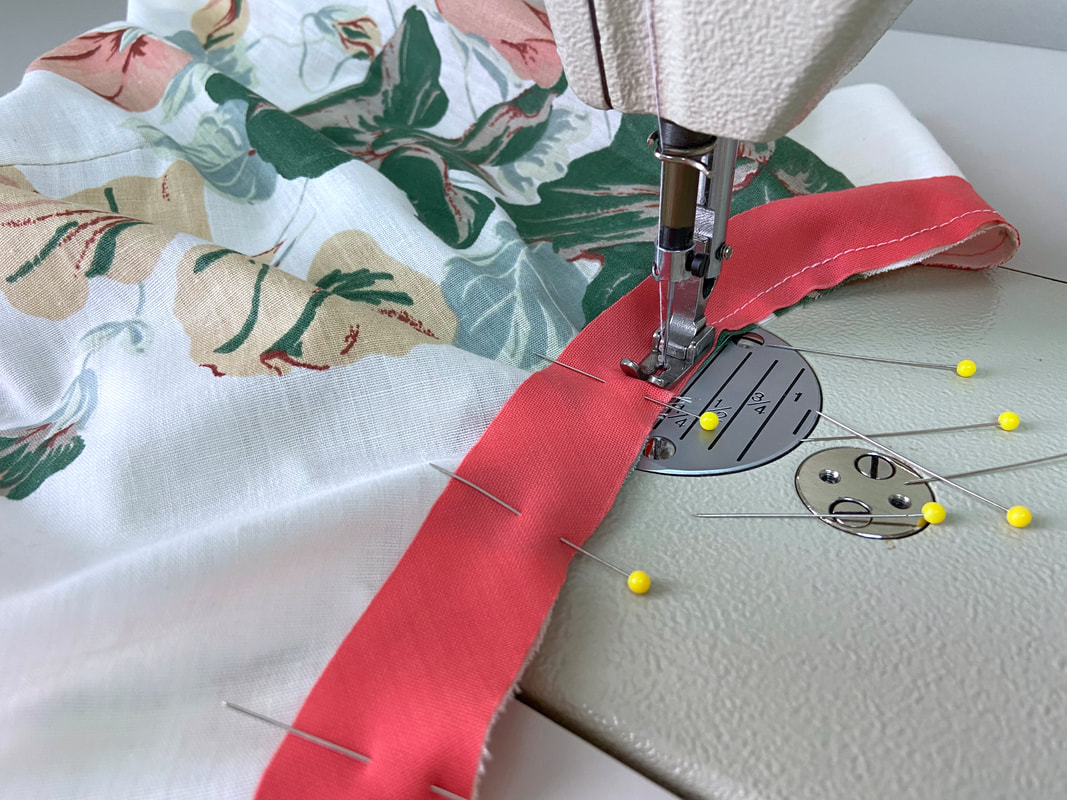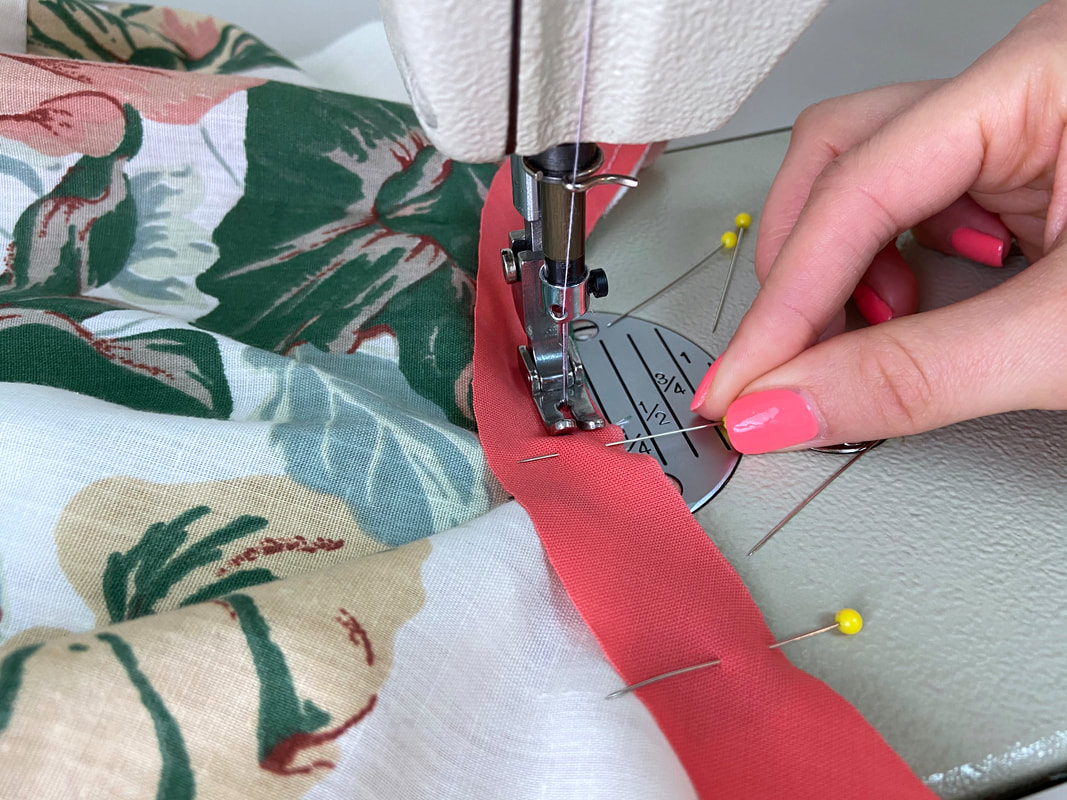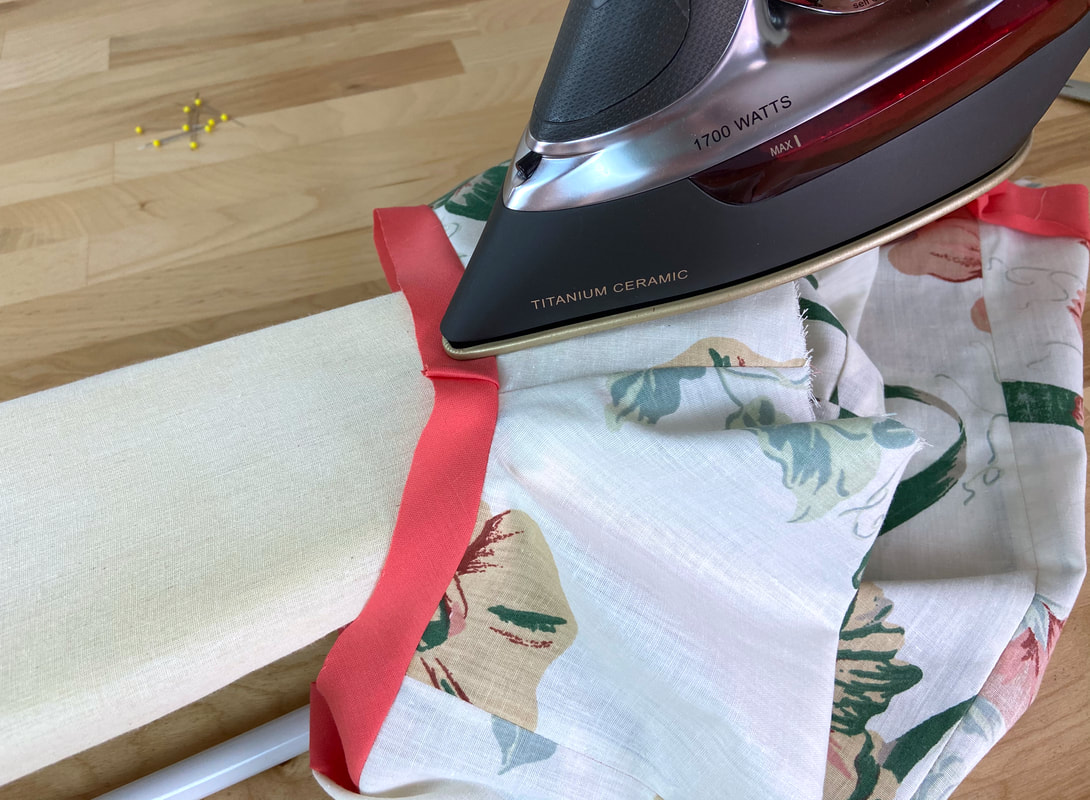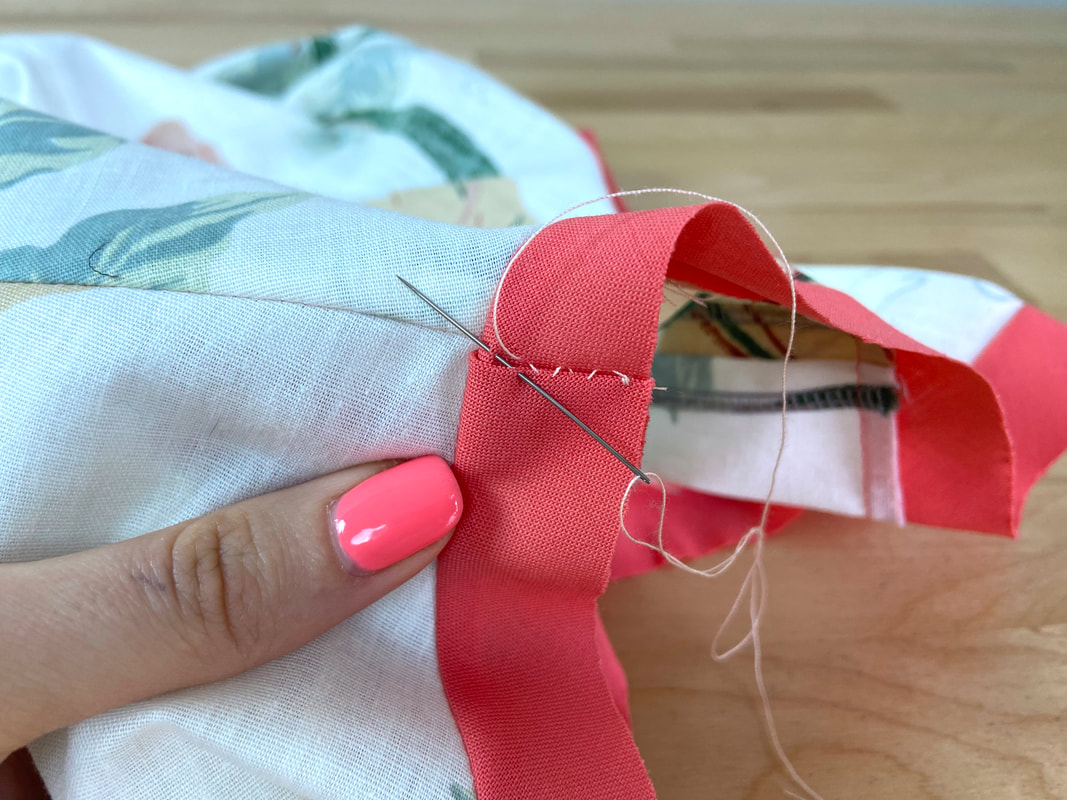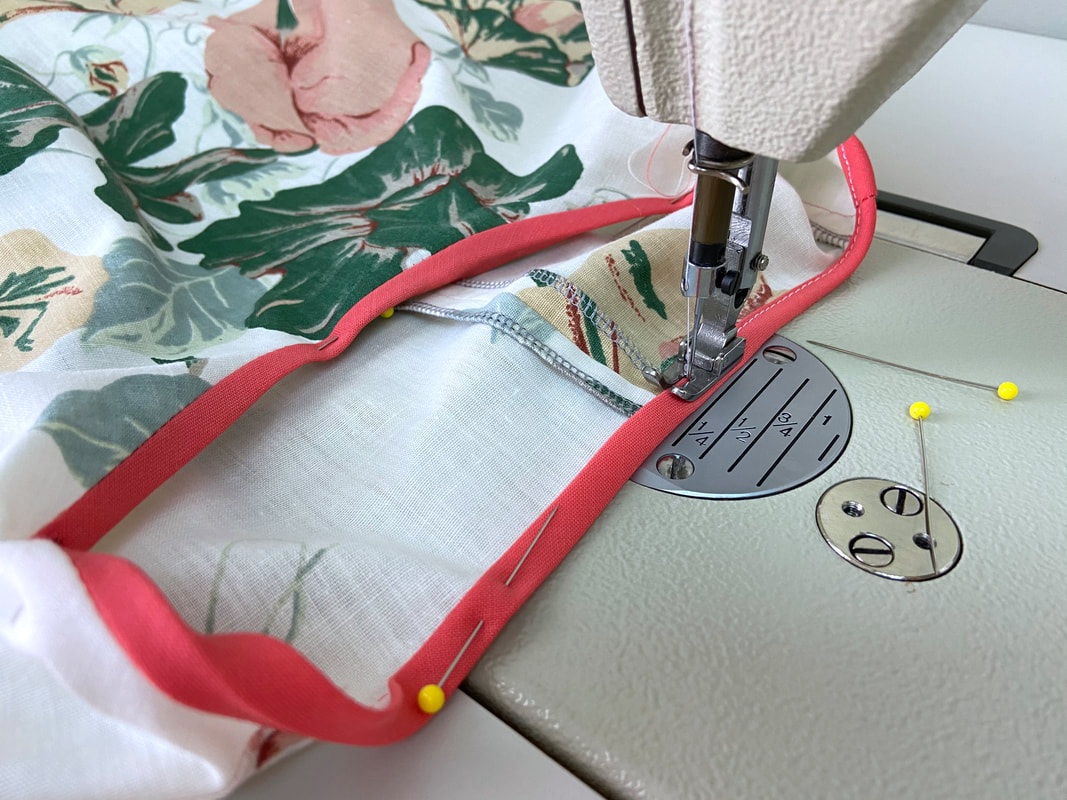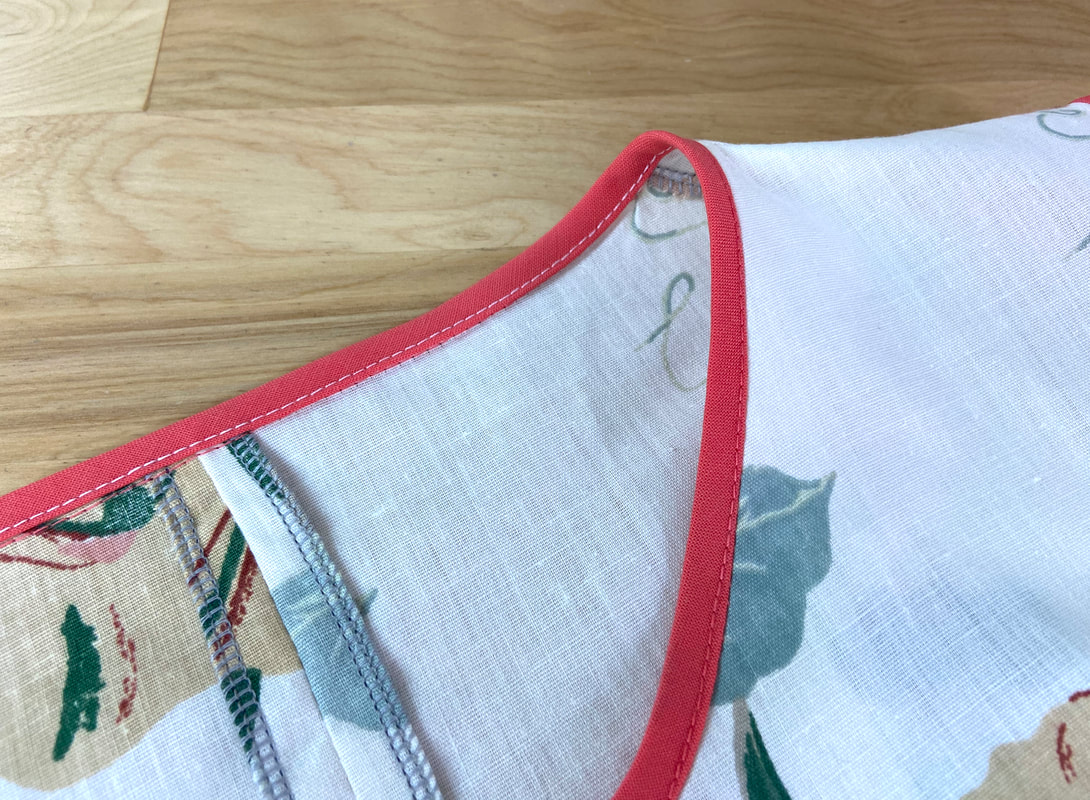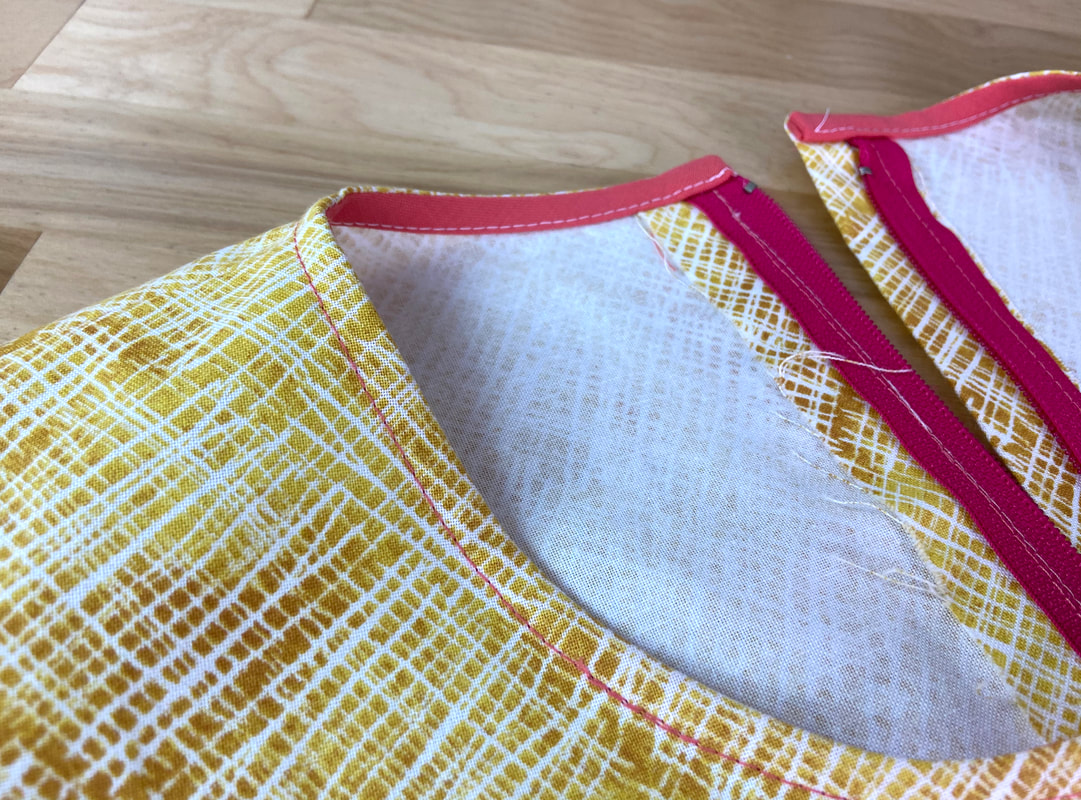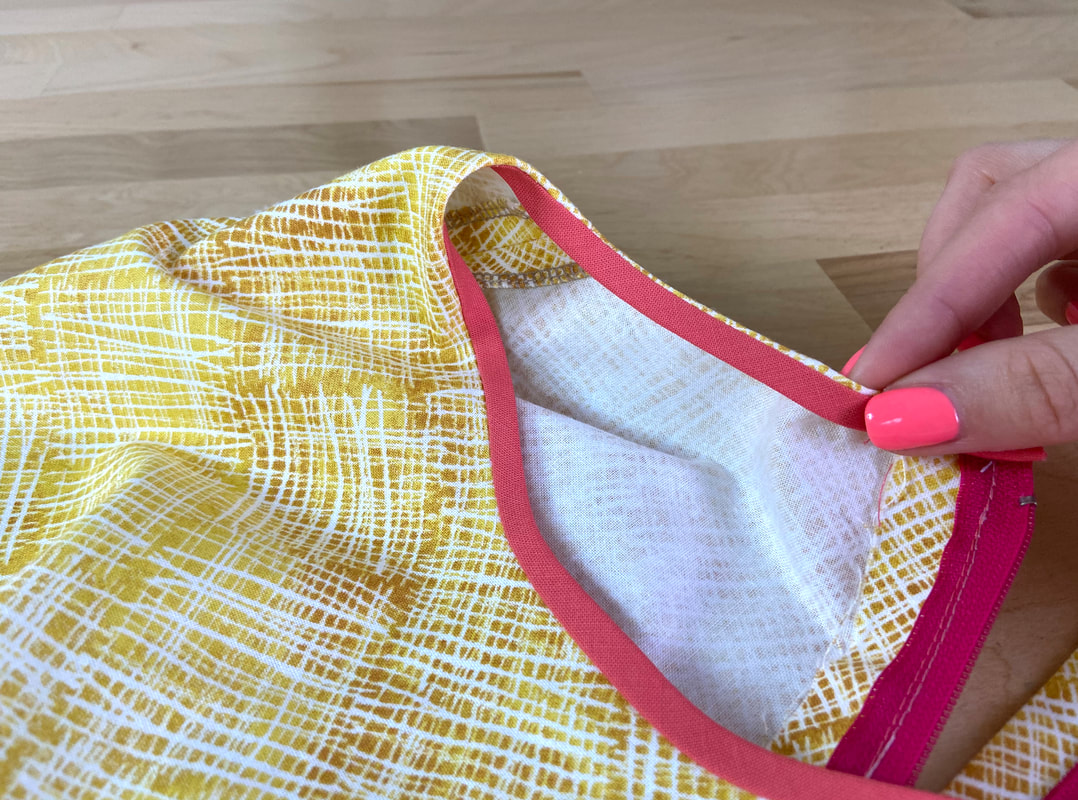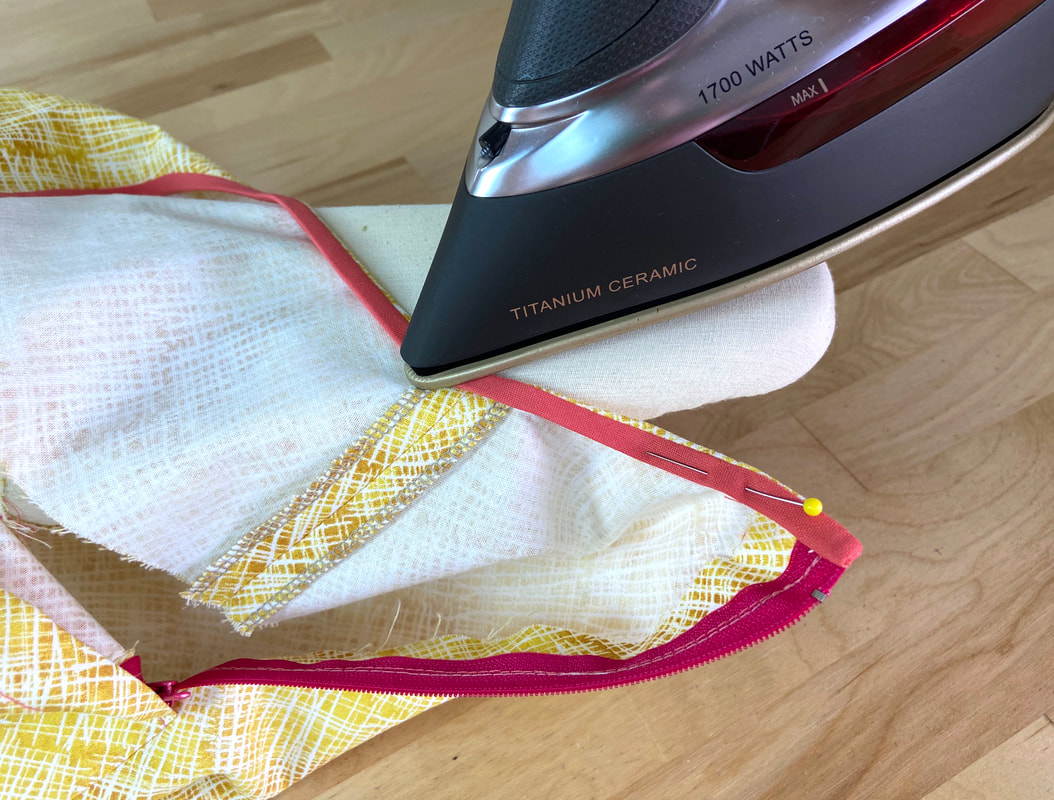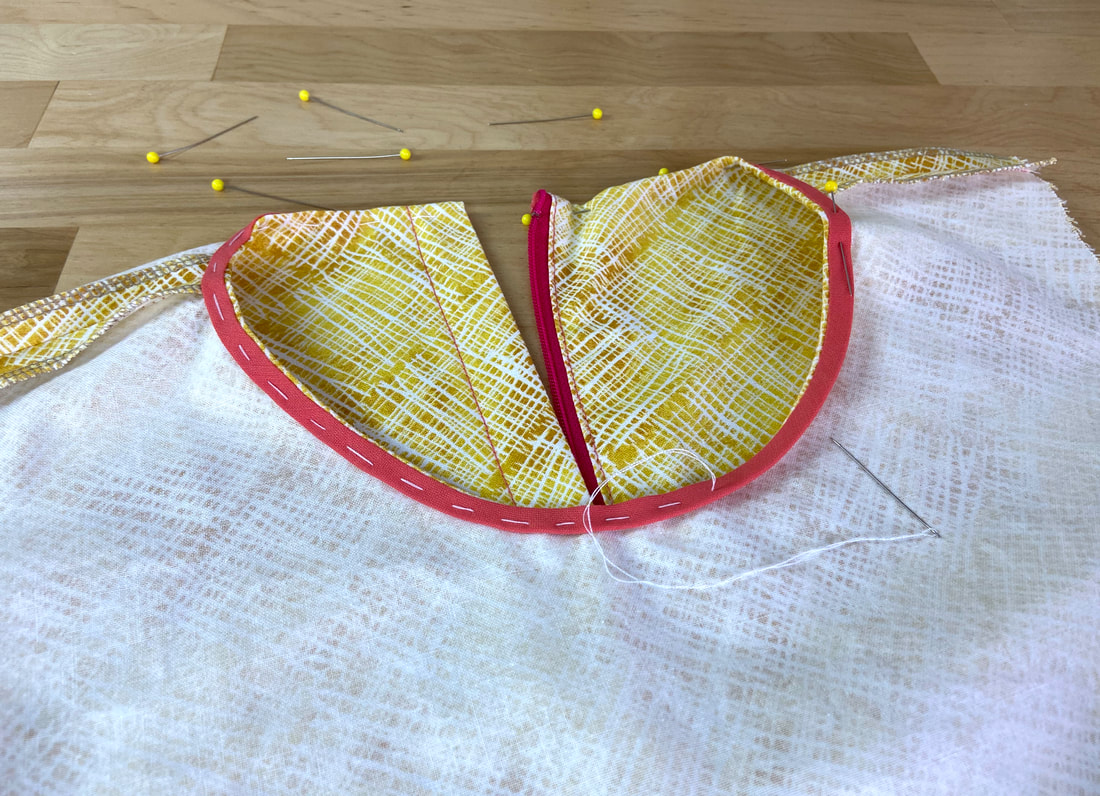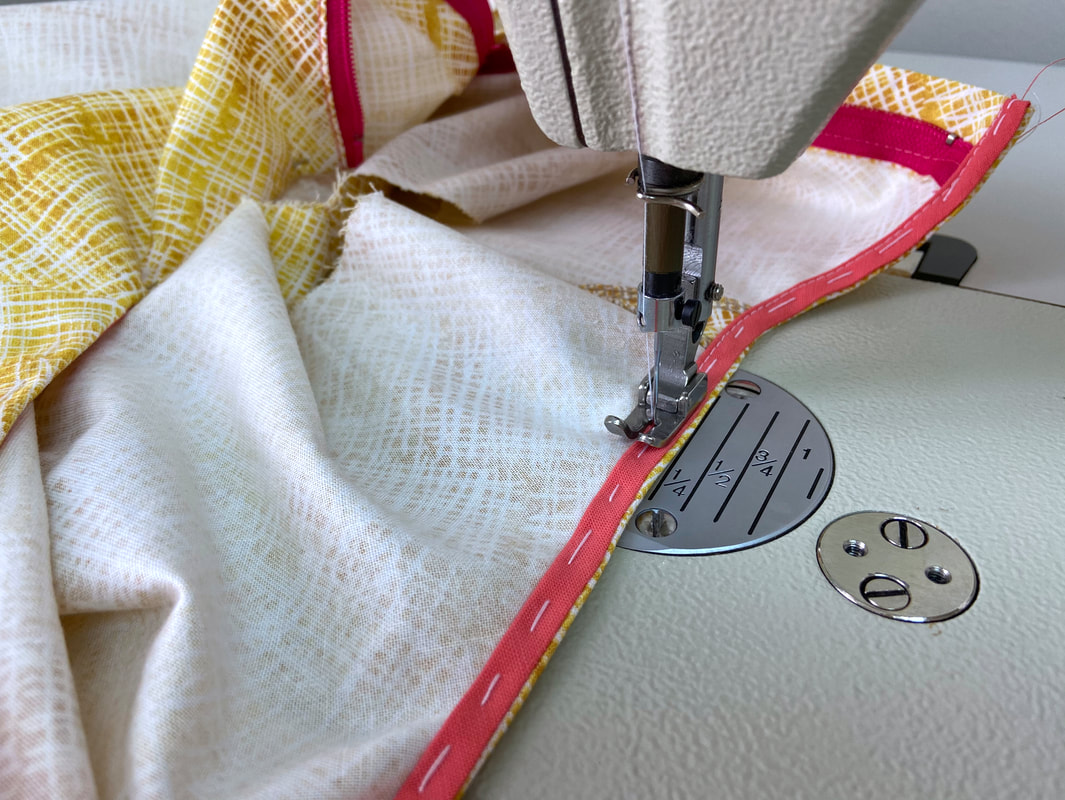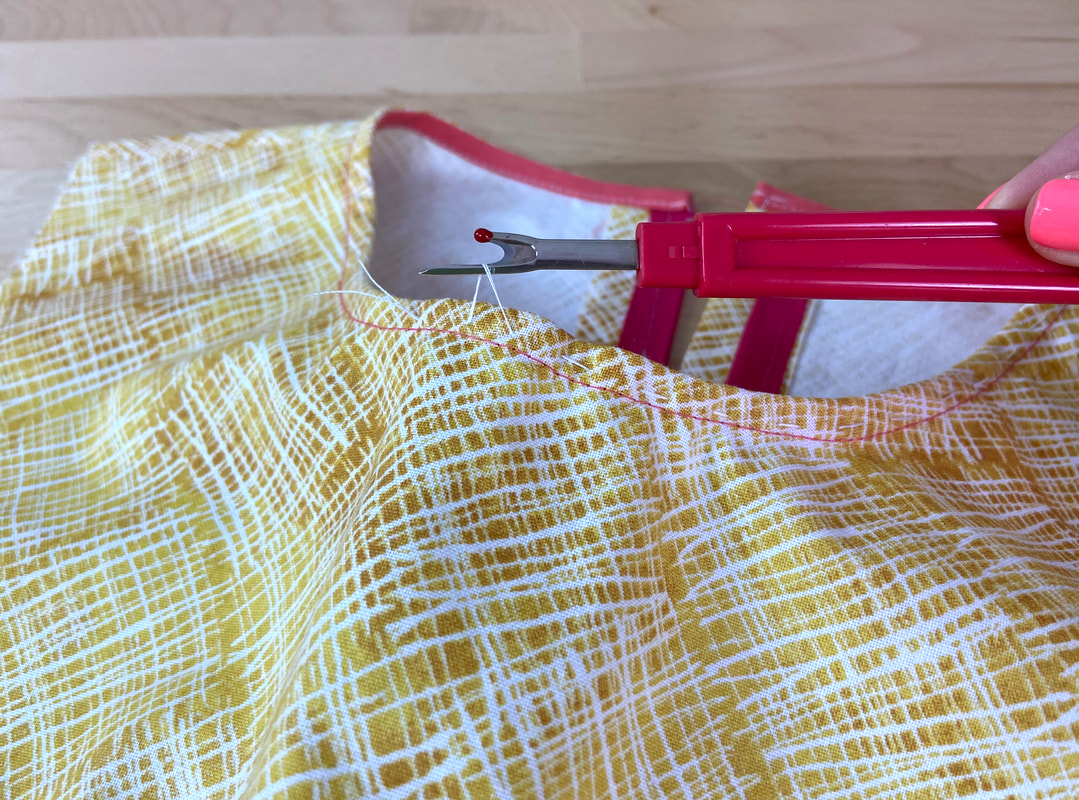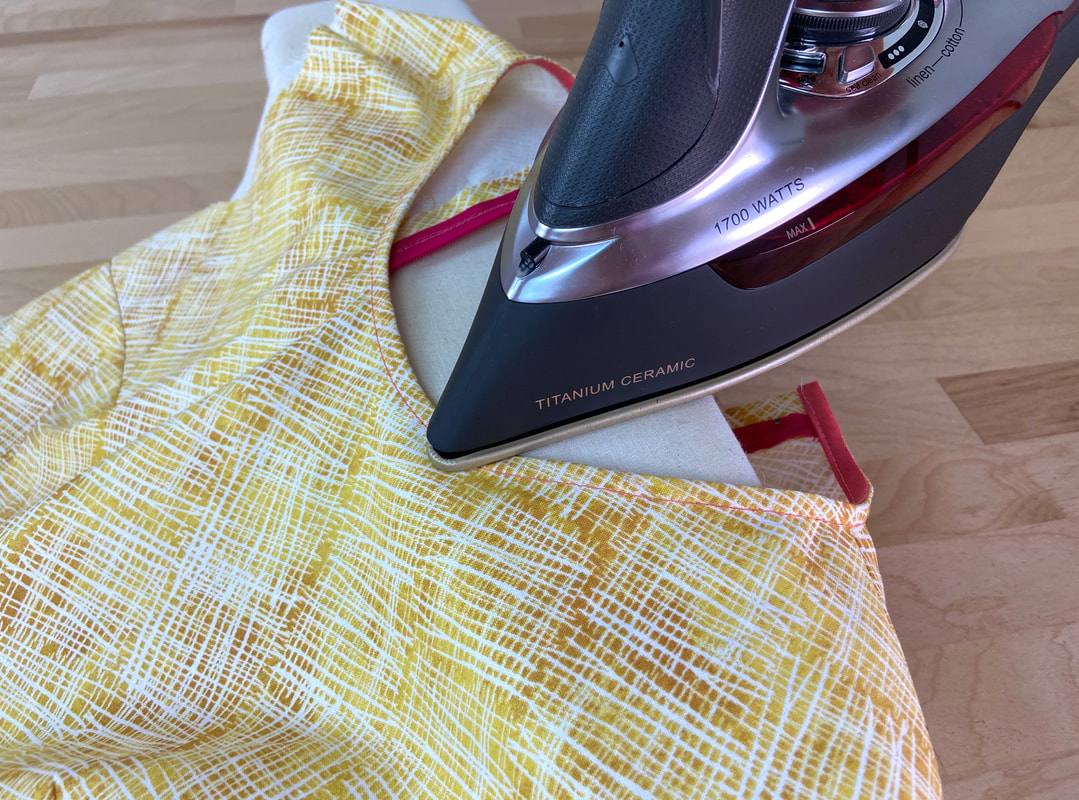What Is Single Layer Binding
A single layer binding is not pre-folded but rather sewn as a plain bias strip which is cut at four times the width of the finished binding application. This binding style is folded in the stitching process after it has been attached to the neck edge.
In terms of binding width, it is recommended that you don’t exceed ¾”, if possible. ¼” to ½” is a good range for a neckline binding application. A larger width like ¾” for example, is more commonly used with heavy, bulky garments since wider binding encloses a thick neckline edge without creating strain and tension issues.
In this example, the binding is ¼” wide and it finishes a medium-weight blouse's curved neckline.
To determine the total width of the bias binding strip, multiply the desired binding width by 4. In this case ¼” x 4 is 1”. Thus, the bias binding strip will measure 1” in width and be cut at the needed length to finish the entire neckline.
To determine how long the binding needs to be, use a measuring tape and measure along the curved neck edge. Add about 2”-3” to this measurement to account for the additional length needed to clean finish the binding ends.
If a single bias strip is not sufficient to cover the entire neckline length, you will have to sew two or more identical bias strips together to lengthen the binding.
Finishing A Neck Edge With Single Layer Binding: With Opening
Start by marking and cutting the single layer bias binding strips.
1. To mark the bias strip(s), draw a line using a ruler and tailor’s chalk (or fabric pencil) on the fabric's bias, directly on top of the fabric wrong side.
2. Next, draw another parallel line at 1” distance (total bias strip width calculated above) and cut the final bias strip carefully along both lines. Cut additional pieces if a longer binding length is needed- you can stitch them together to form continuous bias binding.
3. If your garment has an opening, start at one end of this opening, and leaving about 1/2” of bias excess at the end, pin the lengthwise edge of the single layer binding to the edge of the neckline such that the fabric face sides are touching.
Insert the pins perpendicular to the edges to better secure the layers.
4. When arriving at the other end of the garment opening, leave another 1/2” of binding excess and trim it as shown.
5. Hand baste the binding to the neckline (next to the seamline) for extra stability during machine stitching.
6. Starting on one end of the garment opening, stitch the binding to the neck edge maintaining a smooth, curved stitch, until you arrive at the other opening end. Backstitch at the beginning and end of the stitch.
Once stitched, remove the hand basting using a seam ripper.
7. Next, iron the binding and all seam allowances pointing away from the neckline as shown. It is easiest to press from the face side of the seam but be careful not to crease the garment in the process- keep it smooth over a tailor ham or sleeve board.
8. Fold the ends of the binding in such that each vertical fold aligns with the garment's opening edge on each side. Iron these folds to stabilize.
9. Next, fold the top binding edge in such that the cut edge aligns with the neck's seam allowance edge as shown. Iron this fold to crease.
10. Next, fold the binding one more time such that the folded lengthwise edge from Step 9 above aligns with the neckline stitch, and all raw edges are enclosed within this fold. Iron again to crease the fold line. Insert a few pins as you iron to keep the binding folded in this position.
11. It may even help to hand baste the binding in this position prior to completing with a final stitch.
12. To seal by hand, slipstitch the binding's folded edge to the garment layer underneath as shown.
If slipstitching is used, no topstitching should be visible on the garment face side.
To complete by machine, topstitch the binding at approximately 1/8” away from the neckline seam a shown.
Finishing A Neck Edge With Single Layer Binding: Without Opening
1. Starting at the shoulder seam, trim and fold the end of the bias binding at about ½” in and pin it to the neck edge such that the raw edges align.
2. Continue aligning and pinning the bias strip to the neckline edge with face sides touching as shown. Pin perpendicularly for more grip.
3. When arriving at the starting fold, overlap the end of the binding about ½” over the fold and trim the end of the binding at this point.
4. Machine stitch the binding at the designated seam allowance which is ¼” in this case. Remove each pin as you approach it.
5. Once stitched, extend the binding away from the garment and iron it in this position. At the overlapping ends, blind stitch the top fold line to the other binding layer underneath.
6. Repeat the ironing and stitching process described above for the remainder of the sewing process. Again, you can choose to either slipstitch or topstitch the final binding application.
Sewing Non-Exposed Binding
A single layer binding that is left exposed is visible along the finished neckline edge. To hide and secure it to the inside of the garment, you can fold and topstitch it as described below. In this case, the binding behaves like a narrow facing but as opposed to a traditional facing, it features a visible topstitch along the the finished neckline curve.
1. Turn the binding's finished edge to the inside of the garment such that the binding strip is completely hidden behind the neckline.
2. Carefully iron and pin the binding in this position.
3. Hand baste through the binding and garment layer(s) to secure them prior to applying the final stitch.
4. From the wrong side of the binding, topstitch through the binding and garment layer underneath following the inner fold line as a guide. Keep in mind that this stitch will be visible on the garment’s face side so try to keep it as smooth as possible.
5. When completed, remove the hand basting and iron the finished neckline edge in the direction it was topstitched to achieve a flat, professional finish.

